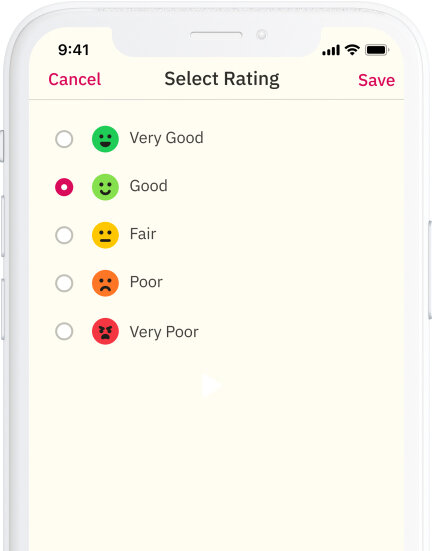Understanding User Journeys with Mobile Ethnography
By Carey Petersen
Introduction
Journey mapping is an essential methodology for all UX research teams. It allows UX researchers to observe how different users experience their product or service by laying down a foundation of actual user experiences, which is crucial to understanding user motivations and goals while fostering a user-centric approach to product design.
Mobile ethnography (also known as online ethnography / digital ethnography) provides an in-depth, context rich lens into the user’s product experience, giving journey maps a more robust source of relevant data. Diverse journey mapping methods can give UX teams a more comprehensive look into their users’ needs.
Key features of Mobile Ethnography for User Journey Mapping
Tools like Indeemo’s mobile ethnography app offer an array of features that can help with effective journey mapping:
You can map every touch point of your User or Customer Journey
Indeemo’s highly visual approach helps you uncover a deeper, human centric, providing an ‘over the shoulder’ understanding of the customer journey
Participants can engage on a 5 point scale to rate their in-context experiences.
Indeemo’s Journey Map and Experience Graph views plot the highs and lows of the user journey so that you can instantly identify why a particular experience was positive or negative and act on these discoveries.
Key Features Include:
Intuitive Easy to Use App
4. Media Rich Researcher Dashboard
2. Facilitates Mobile & Video Diary Studies
5. Powerful Analytical Tools
3. Available in 20+ Languages
6. Enterprise Grade Security
Mobile Ethnography as a method for Journey Mapping
Let’s take a look at three different types of journey maps and how mobile ethnography can enhance them.
1/ Empathy Maps
Empathy maps are used to articulate what is known about a particular type of user to create a shared understanding and aid in decision making. It is typically divided into four categories:
What does the user:
Say - What does the user say out loud during the interview/usability study? (Direct quotes are best.)
Think - What matters to the user? What occupies their thoughts?
Do - How does the user physically go about doing a task?
Feel - What is the user’s emotional state through the experience? What gets them excited? What frustrates them?
Mobile Ethnography’s Role
Video can capture a real-time look into emotions as the respondent is interacting with the product, as well as provide valuable relevant observation of the respondent's emotional experience. The ability to pull direct quotes from the video provides verbatim insights.
2/ Experience Maps
Experience mapping generalizes the concept of customer journey maps across user types and products by visualizing the entire end-to-end experience for a user. This helps UX teams better understand user behavior while remaining product and design agnostic.
Mobile Ethnography’s Role
This particular journey map can benefit in so many ways from mobile ethnography. The UX researcher can observe behaviors such as:
Does the user refresh the page multiple times?
How do they move through a sign-up process?
Does the user shop around online and compare prices?
What process does the user take when navigating online banking?
It is easier for UX professionals to visualize an entire end-to-end experience with mobile ethnography as they are actually “walking” through the process with their user. Video gives a front-row seat to observing how the user moves through a specific task process.
3/ Day in the Life Journey Maps
This map explores the user persona on a “normal” day, not just their journey through the product. What are they like? What does their daily life look like? ‘Day in the life’ maps provide a holistic approach that focuses on five real-life categories:
Daily activities
Places
People
Pastimes
Concerns
The benefit is that this narrows in on the user's daily behaviors to gain insight into how a product can alleviate pain points & visualize obstacles.
Mobile Ethnography’s Role
With the evolution of social media platforms such as TikTok, Facebook, and Instagram, mobile ethnography allows this version of mapping to become a very natural activity for respondents as they record their day.
Summary
Regardless of what path your team chooses, mobile ethnography provides a thorough approach to developing comprehensive user journey maps and allows UX teams to take a personal journey with the user to better understand their emotional state and product needs. This brings a more extensive understanding of the user, rather than just a vague persona or scripted interview.


